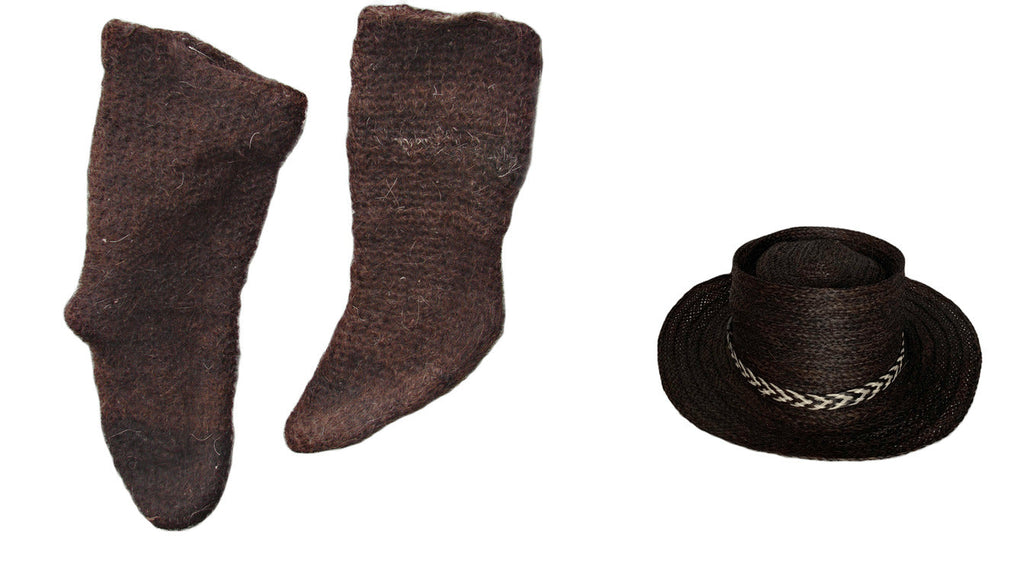
What do these two things have in common?

Socks (krypotki) and a hat are made of the same material - horsehair.
Horsehair has a long and varied history in clothing, utilized for its unique properties and distinctive texture. 
In ancient times, horsehair was occasionally used for practical purposes in clothing due to its durability and availability. However, it was not a primary material for garments.
Medieval Armor: During the medieval period, horsehair was used in the construction of some types of armor. For instance, it was woven into fabrics to create padded garments worn under armor, providing extra cushioning and protection.
From the Renaissance onwards, horsehair began to be used more prominently in fashion. It was often employed in the creation of hats, crinolines, and other accessories that benefited from its stiffness and ability to hold shape.
Horsehair Braid: The use of horsehair braid (a type of fabric or trim made from horsehair) became popular in the 19th century. This material was particularly valued in women's fashion for creating voluminous skirts and structured garments. The braid provided the necessary rigidity to support the shape of crinolines and bustles.
In the early 20th century, horsehair continued to be a popular material in millinery (hat-making). Its ability to be shaped and its durability made it ideal for creating stylish and long-lasting hats.
Couture Fashion: High-end designers occasionally used horsehair for structural elements in couture fashion. It provided the necessary support for complex and elaborate designs.
Decline in Use: With the advent of synthetic materials, the use of horsehair in clothing declined. Synthetic fabrics could mimic the properties of horsehair while being easier to produce and more consistent in quality.
Niche Applications: Despite the decline, horsehair maintained a niche presence in high-end fashion and theatrical costumes, where its unique properties were still valued.
Today, horsehair is occasionally used by high-end fashion designers and in couture clothing. Its association with luxury and traditional craftsmanship makes it a desirable material for certain applications.
Structural Elements: In modern fashion, horsehair is used for internal structuring in garments, such as in corsetry, to provide stiffness and shape without adding bulk.
Horsehair is frequently used in the creation of historical costumes for theater, film, and reenactments. Its authentic texture and properties make it suitable for replicating historical garments.
Theatrical Applications: In theater, horsehair is used for wigs and costume accessories that require a natural look and durability.
In millinery, horsehair remains a valued material for creating high-quality, durable hats.
Decorative Trims: Horsehair braid is used in various decorative applications, including trims for clothing and accessories.
The use of horsehair in clothing has evolved over the centuries, from practical applications in medieval armor to its prominent role in 19th-century fashion and millinery. Although its use has declined with the rise of synthetic materials, horsehair continues to be valued in certain high-end, artisanal, and theatrical applications. Its unique properties—durability, stiffness, and ability to hold shape—ensure that horsehair remains a distinctive and occasionally sought-after material in the world of fashion and costume design.
On our website you can buy things made from horsehair. Look at here.
